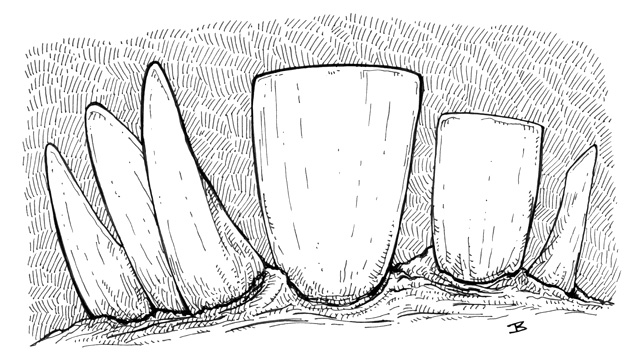The first in a series about fungoid critters for D&D. This week's creature is the...
RAGWING
FREQUENCY: Uncommon
NO. APPEARING: 2-8
ARMOR CLASS: 7
MOVE: 6/10"
HIT DICE: 2
% IN LAIR: Nil
TREASURE TYPE: Nil
NO. OF ATTACKS: 1
DAMAGE/ATTACK: 1-6
SPECIAL ATTACKS: See below
SPECIAL DEFENSES: Nil
MAGIC RESISTANCE: Standard
INTELLIGENCE: Non-
ALIGNMENT: Neutral
SIZE: S
PSIONIC ABILITY: Nil
Attack/Defense Modes: Nil
Ragwings are colonies of spore-like organisms that have somehow developed the ability to fly. They can sense the heat generated by living creatures (out to a distance of 120') and derive sustenance from their blood. They also use the body of their victims as a host within which their spores can sprout. They possess a long needle-sharp proboscis and it is through this that they feed and pass spores into their victims.
In combat, if the creature inflicts more than 5 points of damage in a single attack it's target has been implanted with spores, and must save vs poison to prevent those spores taking hold. Should this fail, the wound will itch and appear to fester over the course of one day, after which the victim will become paralysed and will die within three days. If a limb was struck by such an attack, removing that limb within three days will rid the victim of the spores. Cure Serious Wounds will also negate the spores effect on any part of the body. The spores will otherwise consume the victim and after 10 days 2-6 Ragwings possessing 1HD will sprout from the remains. A single example will sprout in the same time from any amputated limb that has not been destroyed.
Alternatively, the Ragwing will remain attached to its victim if it inflicts more than 3 points of damage in a single attack. It will then drain blood at the rate of 1 hit point per melee round unless destroyed. Once it has consumed blood equivalent to 8 hit points, it will detach itself and attempt to escape.
Should the creature lose all of its hit points from a single attack, its body will shatter and scatter spores over a 10' wide area. Anyone within this cloud must save vs poison or become incapacitated for 1-4 melee rounds.
Ragwings inhabit a variety of environments but seem to prefer those with high points from which they can dive on their victims.
Description: These creatures vary in colour depending on their environment: greenish-yellow in woodland and swamps, greyish blue in mountains, brownish-black in caves. When full of blood they take on a distinct reddish hue. Their bodies are a tangled mass of fibres surmounted by a 'head' that is full of spores. The wings are tattered and seem to shed small pieces when the creature moves. They are not particularly graceful in the air as their flight appears
uncoordinated and ungainly, and when moving along any surface their
wings seem to haphazardly drag the creature around. However, this can
make their movement in combat somewhat difficult to predict.



















